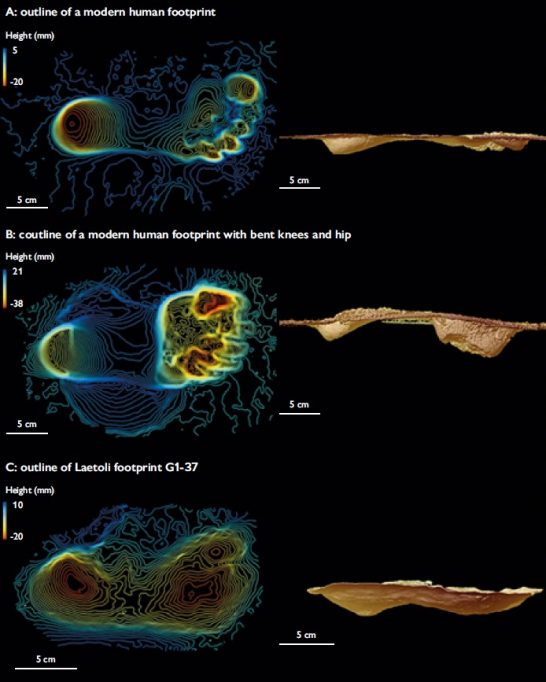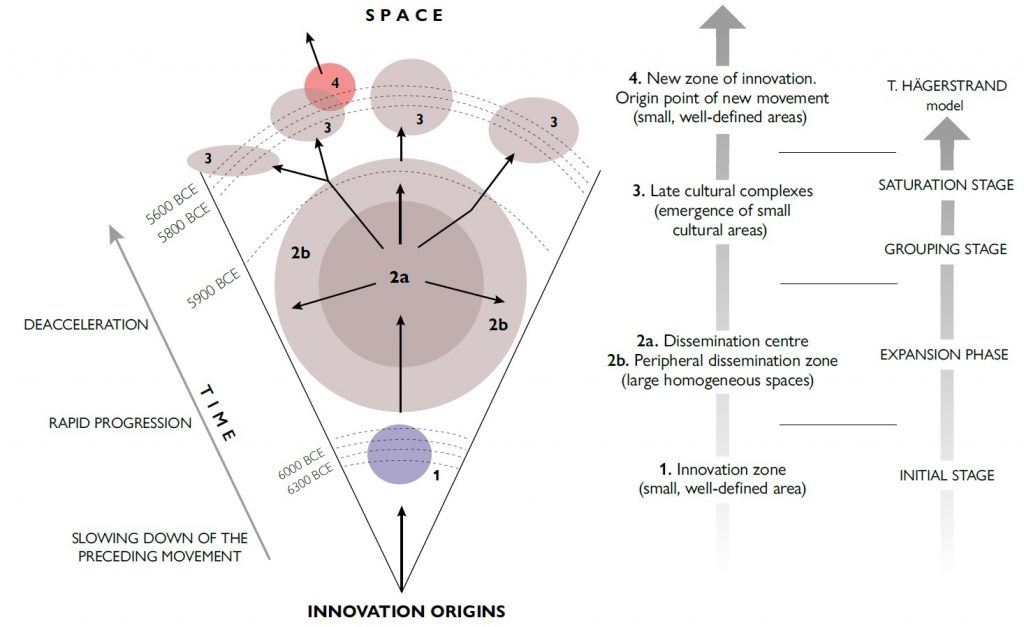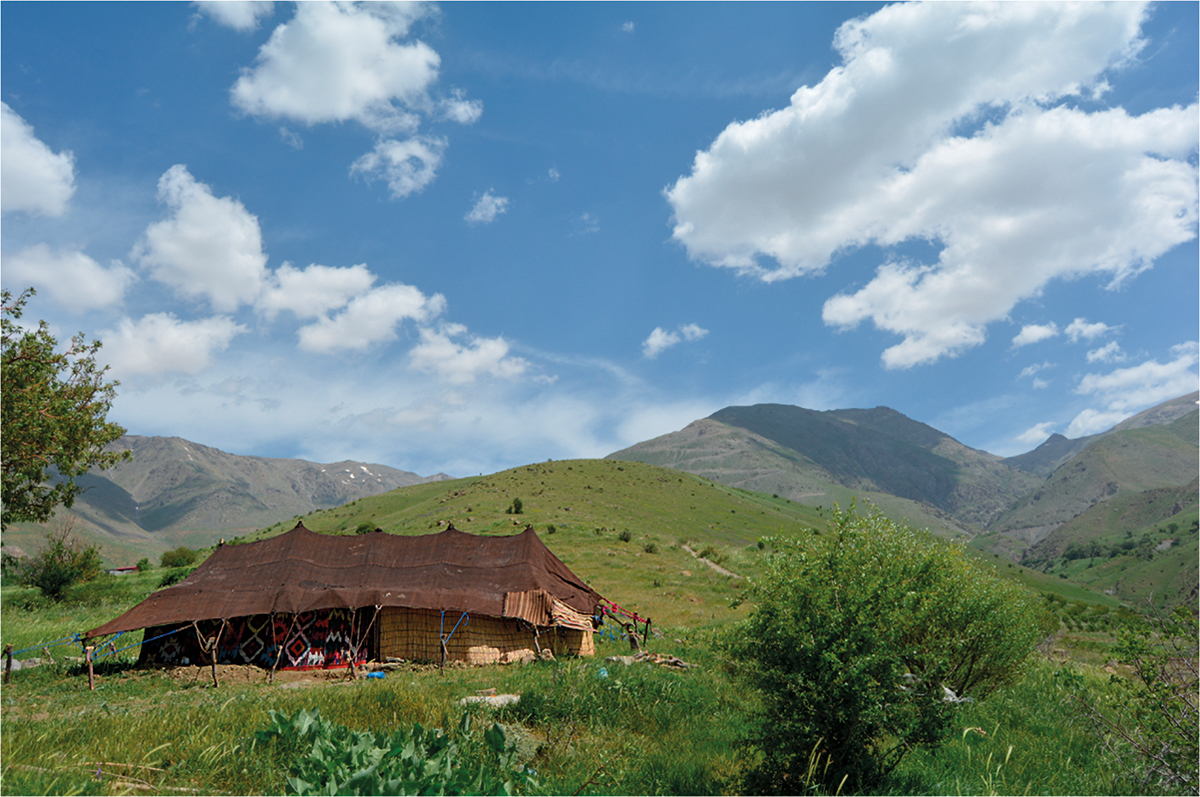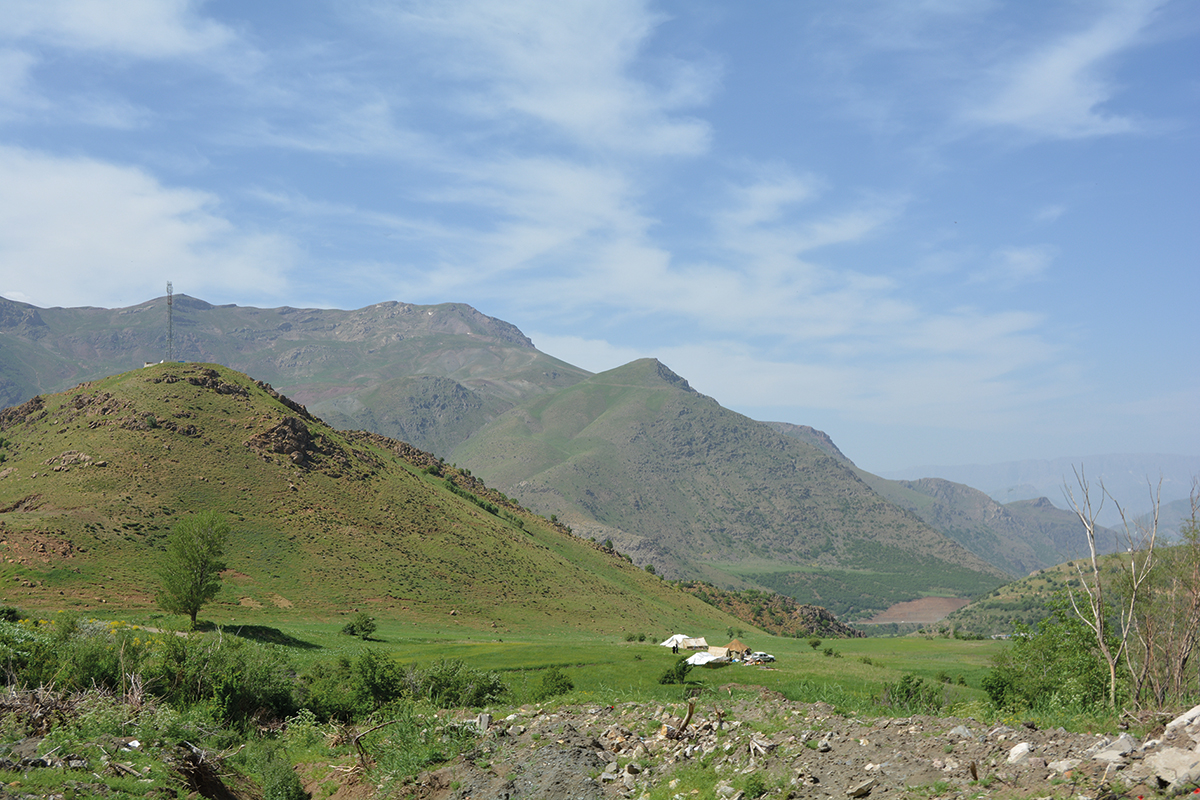Mobility and sedentariness
The convergence of two divergent archaeological concepts
Human communities have settled very diverse geographical and climatic environments on a more or less permanent basis. Much of the archaeological evidence left by humans shows the strategies they adopted in terms of mobility, the structure of exchange networks, and the evidence of their inhabiting an environment that they quickly learned to manage and appropriate. This article provides an overall assessment of the archaeological reality and analytical potential of this record. It is based on cases of recent prehistory and evidence of mobility and nomadism, both from a global perspective and by using specific examples from the Near East.
Keywords: archaeology, mobility, nomadism, sedentariness, networks, property.
Introduction
Throughout human history, two apparently opposing lifestyles have been identified. One is associated with a mobile and nomadic way of life, while the other corresponds to a more stable and permanent lifestyle that we can define as being sedentary. Archaeology has approached the study of the evidence for these periods from a variety of perspectives, the closest of which is the archaeology of mobility or landscape. These studies have been complemented by other work influenced by biology, ethnoarchaeology, and anthropology and have made it possible to document and trace migratory phenomena. They have even addressed what makes human communities organise and travel to unknown lands, not only out of necessity, but also because of a desire to explore.
The archaeological record – whose main aim is to characterise settlements and facilitate demographic and occupation density studies – is diverse, with very uneven levels of preservation. This has led to the identification and description of the human expansion towards new territories and the objects circulating through their exchange networks, as well as detailing of the groups of nomadic hunter-gatherers and settled populations inhabiting a dual typology.
Mobility and the process of hominisation
Evidence supporting the nomadic lifestyle of the first human beings as early as in prehistoric archaeological contexts has been identified, and nomadic or transhumant societies are still present today in various parts of the world. The very need to secure basic resources for subsistence is already reason enough for activities involving mobility and seasonality in a territory, when considering mobility as the ability to move from one place to another (Barnard & Wendrich, 2008). Such mobility is well documented in unique finds such as the Laetoli footprints. In the 1970s, the footprints of three Australopithecus afarensis individuals were discovered at this Tanzanian site, and in 2016, footprints of two new individuals emerged in the same area (Site S). Using potassium-argon dating, these prints have been dated to the Pliocene about 3.7 million years ago, and the current interpretation is that they belonged to a polygynous nomadic group, consisting of a dominant male and several females with offspring.

Figure 1. The mobility of humans has been documented in archaeological finds such as those from the Laetoli site in Tanzania. In the image, three-dimensional scans of the Laetoli hominid footprints, compared to modern human footprints. / Source: Raichlen et al. (2010)
The evidence of bipedalism (Figure 1) highlights their ability to move in an upright position, resulting in changes in the morphology of the waist, pelvis, and hips, with these morphological and biomechanical adaptations being associated with energy saving.1 The mobility of the different species of hominids is also evident in the recovered skeletal fossil record which shows their nearly global spread across the planet between 20,000 and 10,000 before the common era (BCE). These were small groups with some characteristics in common, such as their well-adapted hunting and gathering strategies.2 The evidence of pathologies, dental striations, muscle insertions, and primitive movement patterns also differs between groups and individuals in terms of their basic subsistence strategies and diversification of their food consumption; all findings which are also applicable to more recent populations.
The Palaeolithic archaeological record shows evidence of the complexity of settlements, both in caves and open-air sites, and their intermittent occupation based on seasonal, itinerant, and even shared use across different climatic periods (Burke et al., 2017). The presence of combustion or support structures, as well as some hut elements and very few burials at the end of the period indicate that these were communities with a high capacity for mobility and adaptation in the contexts of long- and medium-term climatic instability.
The last hunter-gatherers and the case of the Natufians
It is well known that the number of testimonies of campsites, hunting stations, and control points increased during the period of climatic improvement (Allerød oscillation)3 and the short cold and dry period (Dryas III or Younger Dryas) between 12,000–9500 BCE. Of all the regions, the Mediterranean’s northern Levant has the most significant concentration of such sites.
This indicates an increased attachment of these hominid populations to the territory they frequented which, over several millennia, materialised as the recurrent occupation of aggregation sites and other sites whose occupation was much more ephemeral.
In an arid environmental context, early Epipalaeolithic sites located beside lakes and wetlands such as Kharaneh IV in Jordan or Ohalo II in Israel were perfectly suited for year-round occupation. Meanwhile, the discovery of 11 individual burials complete with artefacts, fauna, and post-depositional manipulations at ‘Uyun al-Hammam in Jordan is evidence of these hominids’ desire to integrate their spaces of life and death.
The habitat of these hunter and gatherer groups from the Mediterranean Levant (present-day Palestine, Israel, Jordan, and Lebanon), known as Natufians after the eponymous site of Wadi al-Natuf (Palestine), can be defined as stable settlements. The remains of dwelling structures or huts have been preserved in these sites, with the essential characteristics marked by oval or circular floor plans. They contain many of the domestic arrangements of groups undergoing the process of sedentary settlement. These include the presence of hearths or combustion structures, storage containers and silos, and extensive grinding and crushing equipment that would have allowed the creation of highly structured households that appear to have functioned autonomously, as was the case at Ain Mallaha (Israel), Wadi Hammeh 27 (Jordan), and HaYonim (Israel).
These semi-excavated circular structures measured about 2 to 8 metres in diameter; they had perishable roof support structures constructed with postholes as well as boundaries formed by aligning stones to form a plinth or basement. In general, small clusters of domestic units are found concentrated in an area measuring as much as 500 metres across. Although there is still debate about the true sedentary nature of these populations, a detailed analysis of the constructions indicates increased investment in labour and heavy machinery. Above all, analysis of the natural resources exploited by these Natufian groups allows us to describe them as stable (albeit short-lived) households, with evidence of renovations and repairs having been made to the inside of these houses. Some examples of such sites include El-Wad, Nahal Oren, Jericho, El-Khiam (Israel-Palestine), Wadi Tumbaq 3 (Syria) and, in the Middle Euphrates River Valley, Mureybet, or Tell Abu Hureyra (Syria). Other more distant evidence can be found at the Taurus at Körtik Tepe (Turkey) and in the Zagros mountains at Zawi Chemi and Shanidar (Iraqi Kurdistan). Importantly, all these sites are associated with a gradual move towards sedentary settlements with the introduction of a new agent: the domestication of wild sedentary settlements.4
These building innovations seem to be related to a new social organisation identified both in changed burial practices (careful burial, the presence of exogenous grave goods, and the first tomb groupings) and the intensification of local exchanges (by controlling provenance areas, the circulation of objects 5 and shared technological knowledge). This relationship has led some researchers to propose that the population had new ways of relating both to the control of space and structuring of domestic dwelling units (Bar-Yosef & Valla, 2013).
The process of Neolitisation and new mobility modes
The emergence of new ways of relating to the environment occurred within the framework of a long-term process in which plant domestication (around 11,000 BCE) and animal domestication (which began in 8700 BCE) converged with numerous technological innovations, such as the appearance of ceramics in 7000 BCE. All of this involved the unequal dissemination and mobility of ideas, products, and people.
However, the idea that plant domestication necessarily involves stable (and therefore sedentary) settlement patterns is not always supported by the archaeological evidence. The sites of this period are studied from the point of view of a diachronic transformation of processes, but also in terms of the original areas in which these cereals have been documented in the wild.6 Thus, these sites provide evidence of morphological domestication of these seeds, or at least show a pre-domestication culture.
These activities, with their irregularities, slowdowns, and pauses, are little known in the Near East, but pioneered research in the diffusion of Neolithic people to Europe, either by sea or over the mainland. After the initial work by Ammerman and Cavalli-Sforza (1984) or Guilaine (2000–2001), as well as numerous subsequent scientific contributions and nuances, the most recent work has focused on the introduction of mathematical models. This is based both on radiometric dating and on evidence that makes it possible to identify interruptions, frontiers, and focal areas of new technological and social changes such as the emergence of Megalithism (Figure 2).

Figure 2. Standard Neolithic diffusion model based on the phased sequencing developed by Rasse following an update of Hägerstrand’s initial 1953 proposals. These can be broken down into an initial stage in which an innovation associated with the manipulation of plant or animal species or a technological and social innovation is first documented. This is followed by a further stage of expansion, a stage of saturation, and the emergence of a new innovation and dissemination focus. / Source: Based on Rasse (2008)
Throughout the Neolithic, major adjustments in the subsistence economy involved the maintenance of more livestock and increased mobility. Likewise, new data has increasingly documented significant changes in the landscape and in exchange and communications networks during the ceramic Neolithic period. The number of settlements also increased, although they were more dispersed and grouped into smaller sites. These were characterised by regularity and an ordered house construction pattern but showed little planning and organisation. In fact, relatively rare and large Late Neolithic sites, such as Sha’ar HaGolan (Israel) and Tell Sabi Abyad (Syria), may in fact be palimpsests of smaller occupations over time (Akkermans, 2013). Indeed, not all the settlements developed into long-lived villages. As such, a number of short-lived, ephemeral occupations have been located in upper Mesopotamia. Occasional and itinerant sites have also been documented in caves and areas of open-air activities in arid environments.
Such settlements provided many types of facilities, not only for their sedentary populations but also for herders who roamed the surrounding steppes. The Sabi Abyad site suggests the existence of communal storage involving the redistribution of part of the contents to a nomadic population. The presence of seals and seal negatives indicates the need to mark products in a clear context of redistribution between population groups of different origins.
This organisational capacity, associated with the management of biotic or abiotic surpluses, is also clearly connected to the concept of identity and territoriality; this was a key phenomenon in the latest cultural groups of the Neolithic such as the Halaf and Obeid cultures.
Thus, villages became centres of production, storage, exchange, and distribution, and the setting for all sorts of social activities. At the same time, small sites with evidence of episodic habitation were documented in El Kowm (Cauvin, 1990) and other marginal areas in central and eastern Syria or the Jafr Basin and Bishri mountain range in Jordan (Fujii, 2020) and were clearly seasonal and were associated with nomadic groups. One of the most interesting diachronic studies published to date and carried out in the latter geographical area showed that itinerant camps had existed there since the beginning of the Neolithic to the Late Bronze Age (Figure 3).
They had significantly adjusted the subsistence economy, leading to increased animal husbandry, transhumance, and mobility (Porter, 2012). This and other work showed that pastoral transhumance was implemented unevenly. For example, in the case of southern Jordan it had started at the beginning of the Neolithic period, more than a millennium before the 8.2 Ka climatic event traditionally noted as the time of the earliest signs of this phenomenon.
Nomadism, transhumance pastoralism, and their role in state formation
Urban growth associated with the distribution of land and water resources led to a greater contrast between sedentary and nomadic groups in the archaeological record. Indeed, evidence of the processes of population concentration in the 4th and 3rd millennia BCE has revealed two large areas of differentiated agro-ecological control. On the one hand was Northern Mesopotamia with a phase of population aggregation that followed very different patterns of state formation and territorial expansion (Uruk), with a wider range of more ephemeral sites located at the foot of the main natural pathways. On the other hand, was the southern zone where human concentration led to the emergence of the first cities and pastoralism was favoured thanks to the ecological conditions of Lower Mesopotamia (Szuchman, 2009). The definition of zones of uncertainty in the archaeological record clearly shows the existence of conflicts where both nomadic and more stable populations had to share and agree upon land management. This would have been a key moment in the definition of access to private property as we understand it today.

Figure 4. Nomadic cattle-herding camp without a stabling space in Haji Omeran (Iraqi Kurdistan). In the Near East, nomadic societies still make up a significant part of today’s population. The absence of structured stabling spaces is a limitation and a challenge for archaeology. / SAPPO-UAB
Thus, in the Near East, nomadic societies still currently comprise a significant part of the population. The importance of these societies is clear and was already evident in the earliest written sources. For example, cuneiform texts refer to pastoral nomadism and transhumance, differentiated mainly in terms of the management relations between nomadic groups and the elites ruling the city-states (Porter, 2012) (Figure 4).
With the increase in epigraphic data, there was considerable growth in the documentation of nomadic groups and of transhumant activity controlled from cities. It appears that from the second half of the 3rd millennium BCE onwards, these populations interacted with communities that were already sedentary and organised as states, with examples including the Mesopotamian cities of Mari (Syria), Ur, or Eridu (Iraq). However, variability in the economic and social practices adopted by these groups–which had no permanent residences–and the impact on the geostrategic expansion of these early empires has not been detailed to the same extent because of extensive differences between these ethnic groups and in the preserved textual references.
|
Nomadic hunter-gatherers |
Nomadic livestock breeders |
| Obtaining and consuming | Production (determined by the pattern of consumption of their herds) |
|
Approach to resources or easier harvesting locations |
Approach to resources for livestock (regardless of human resources) |
| Mobility allows variation in the access to resources | Mobility to maintain access to a resource (livestock) |
|
Immediate consumption after obtaining |
Human consumption is independent from livestock |
| Migration follows a complex pattern | Migration follows a simple pattern |
|
Risk minimisation |
Optimisation of livestock production, minimisation of risk to livestock |
| Seasonal and scattered archaeological evidence | Forced dispersion, less functional variability |
| Stable and localised migratory patterns (but also a diaspora) |
Unstable migration routes associated with dramatic events |
Such diversity in the records has led to the establishment of several parameters to identify different types of mobility, as summarised in Table 1. This typology attempts to distinguish between two types of nomadism: the nomadism of great open spaces, which would allow tribes to develop a great deal of autonomy from the state formations around them, and a second, more circumscribed type of nomadism, in which groups would have been confined to desert, steppe, or mountainous areas – always with very specific geographical conditions – with or without a connection to existing state formations.
However, in addition to the existence of nomadic groups (transhumant or otherwise), other realities must also be considered. This is the case of one of the least studied phenomena, that of communities with seasonal and nomadic itinerant agriculture. This practice is still implemented in areas of great thermal contrast such as the Zagros mountains and the plains of the Tigris River (Figure 5).
Final reflections
At the beginning of the Neolithic period, hunter-gatherer communities in the process of sedentarisation would have been the first humans to construct a symbolic system of representation and legitimisation using constructed space.7 As Watkins (2004) reflects, the concept of constructing houses and other buildings was directly linked to mobility, semi-sedentarism (and the conception of property) in producer societies. This idea indicates that the domestic unit became the basic social space and the basis for change in their relationship with the environment and with other groups. Importantly, these limited, consensual, and shared designs require permanence (or very frequent use) over space and time.

Figure 5. Settlement of seasonal nomadic farmers in Khallan, Soran (Iraqi Kurdistan). Parallel to the existence of nomadic groups that practice transhumance, there are other realities such as these nomadic farming communities that carry out itinerant and seasonal agriculture. / SAPPO-UAB
The construction of collective buildings of a markedly symbolic nature at Göbekli Tepe (Turkey), Dja’de el-Mughara, or Jerf el Ahmar (Syria) to cite the best-known examples, was complemented by the appearance of common constructions in village spaces and the atomisation of storage strategies. Such constructed architectural evidence is a powerful form of representation for groups and their fixation in particular spaces, and facilitates both group legitimisation and belonging.
More and more elements of artificial/symbolic memory and social memory retained by groups in physical spaces (social landscapes) are being identified. But case studies do not address the complex reality of the human communities that continue to practice different forms of mobility. Archaeological studies are still challenged by the struggle to resolve this wide range of complex records and data. This includes modelling and characterisation of intricate networks as well as sequencing the different phases into which these processes can be broken down. A well-known example is the challenge of collecting available quantitative data to optimally cross-reference variables. In addition to these modelling processes (Cribb, 1991; Hauser, 2006), the globalisation phenomena that also arose in the early stages of human diffusion must also be identified and characterised (Hodos, 2017).
As Kristiansen (2021) and other authors have reflected, the incorporation of ancient DNA, migration, and demographic change studies are notable ongoing challenges in the field of archaeology. These are reflected today in economic and socio-political migration, which encompasses the concept of being a refugee in all the breadth of its meaning and the enormity of its reality.
Notes
1. It is believed that changes in mobility altered the flexion patterns of the femur and central tibia, leading to changes in robustness. Of note, the relationship between mobility levels and the diaphysis structure of the lower extremities has also been used to test the hypothetical decrease in mobility present in more recent chronologies. (Go back)
2. Thus, mobility in both hominids and humans is associated with their potential physical attributes. Homo sapiens sapiens had already developed the ability to move and travel using various means, either on foot or using some type of traction. Most importantly, they also had the ability to modify their environment to make it more accessible. (Go back)
3. The oscillation towards a more temperate climate during the Würm III or third glaciation of the Upper Palaeolithic was a period defined as the Allerød oscillation between 12,000 and 10,000 BCE. It featured climatic episodes involving a return to glacial conditions, the last of which was the Younger Dryas, which preceded the Preboreal (Lower Holocene) and may have been associated with the adoption of agriculture to adapt to a complementary subsistence model. (Go back)
4. Mainly involving the cultivation of cereals and legumes based on evidence such as the increased presence and size of seeds, storage structures, and crop-associated weeds, and modification of milling and crushing tools and sickles, among other factors such as increased tooth decay in the specimens from the site. (Go back)
5. In addition to shells, flint, and ochre, other materials such as obsidian, basalt, and ornamental stones were also incorporated. (Go back)
6. Mainly wild species of Triticum monococum boeticum (Zagros, Taurus, and Anatolia), Triticum turgidum dicoccoides, Triticum timopheevii araticum, and Hordeum vulgare spontaneum (Zagros, Taurus, and Mediterranean Levant). (Go back)
7. That is to say, their buildings, both for habitation (domestic units or houses) and other collective buildings or constructions for different purposes (canals and walls, etc.). (Go back)
References
Akkermans, P. M. M. G. (2013). Living space, temporality and community segmentation: Interpreting Late Neolithic settlement in northern Syria. In O. P. Nieuwenhuyse, R. Bernbeck, P. M. M. G. Akkermans, & J. Rogash (Eds.), Interpreting the Late Neolithic of Upper Mesopotamia (pp. 63–76). Brepols.
Ammerman, A. J., & Cavalli-Sforza, L. L. (1984). The Neolithic transition and the genetics of populations in Europe. Princeton University Press.
Bar-Yosef, O., & Valla, F. R. (Eds.). (2013). Natufian foragers in the Levant: Terminal Pleistocene social changes in Western Asia. Ann Arbor.
Barnard, H., & Wendrich, W. (2008). The archaeology of mobility old world and new world. Cotsen Intitute of Archaeology.
Burke, A., Kageyama, M., Latombe, G., Fasel, M., Vrac, M., Ramstein, G., & James, P. M. A. (2017). Risky business: The impact of climate and climate variability on human population dynamics in Western Europe during the Last Glacial Maximum. Quaternary Science Reviews, 164, 217–229. https://doi.org/10.1016/j.quascirev.2017.04.001
Cauvin, J. (1990). Les origines préhistoriques du nomadisme pastoral dans les pays du Levant: Le cas de l’oasis d’El-Kowm (Sirye). In H. P. Franchfort (Ed.), Nomades et sédentaires en Asie centrale: Apports de l’archéologie et de l’ethnologie (pp. 67–78). CNRS Éditions.
Cribb, R. L. (1991). Nomads in archaeology. Cambridge University Press.
Fujii, S. (2013). Chronology of the Jafr Prehistory and Protohistory: A Key to the Process of Pastoral Nomadization in the Southern Levant. Syria, 90, 49–125. https://doi.org/10.4000/syria.1723
Fujii, S. (2020). Pastoral nomadization in the Neolithic Near East: Review from the viewpoint of social resilience. In Y. Nara & T. Inamura (Eds.), Resilience and human history (pp. 65–83). Springer. https://doi.org/10.1007/978-981-15-4091-2
Guilaine, J. (2000-2001). La diffusion de l’agriculture en Europe: Une hypothese arytmique. Zephyrus, 53-54, 267–272.
Hägerstrand, T. (1953). Innovation diffusion as a spatial process. University of Chicago Press.
Hauser, S. R. (Ed.). (2006). Die Sichtbarkeit von Nomaden und saisonaler Besiedlung in der Archäologie. Halle.
Hodos, T. (Ed.). (2017). The Routledge Handbook of Archaeology and Globalization. Routledge, Taylor & Francis group.
Kristiansen, K. (2021). Towards a new paradigm? The third science revolution and its possible consequences in archaeology. Current Swedish Archaeology, 22, 11–34. https://doi.org/10.37718/CSA.2014.01
Porter, A. (2012). Mobile pastoralism and the formation of Near Eastern civilizations. Weaving together society. Cambridge University Press.
Raichlen, D. A., Gordon, A. D., Harcourt-Smith, W. E. H., Foster, A. D., & Haas, W. R. Jr. (2010). Laetoli footprints preserve earliest direct evidence of human-like bipedal biomechanics. PLOS ONE, 5(3), e9769. https://doi.org/10.1371/journal.pone.0009769.g001
Rasse, M. (2008). La diffusion du Néolithique en Europe (7000-5000 av. J.-C.) et sa représentation cartographique. Mappemonde, 90(2). http://mappemonde-archive.mgm.fr/num18/articles/art08205
Szuchman, J. (2009). Nomads, tribes, and the state in the ancient near East. Cross-disciplinary perspectives. The Oriental Institute of the University of Chicago.
Watkins, T. (2004). Building houses, framing concepts, construction worlds. Palérorient, 30(1), 5–23. https://www.persee.fr/doc/paleo_0153-9345_2004_num_30_1_4770





